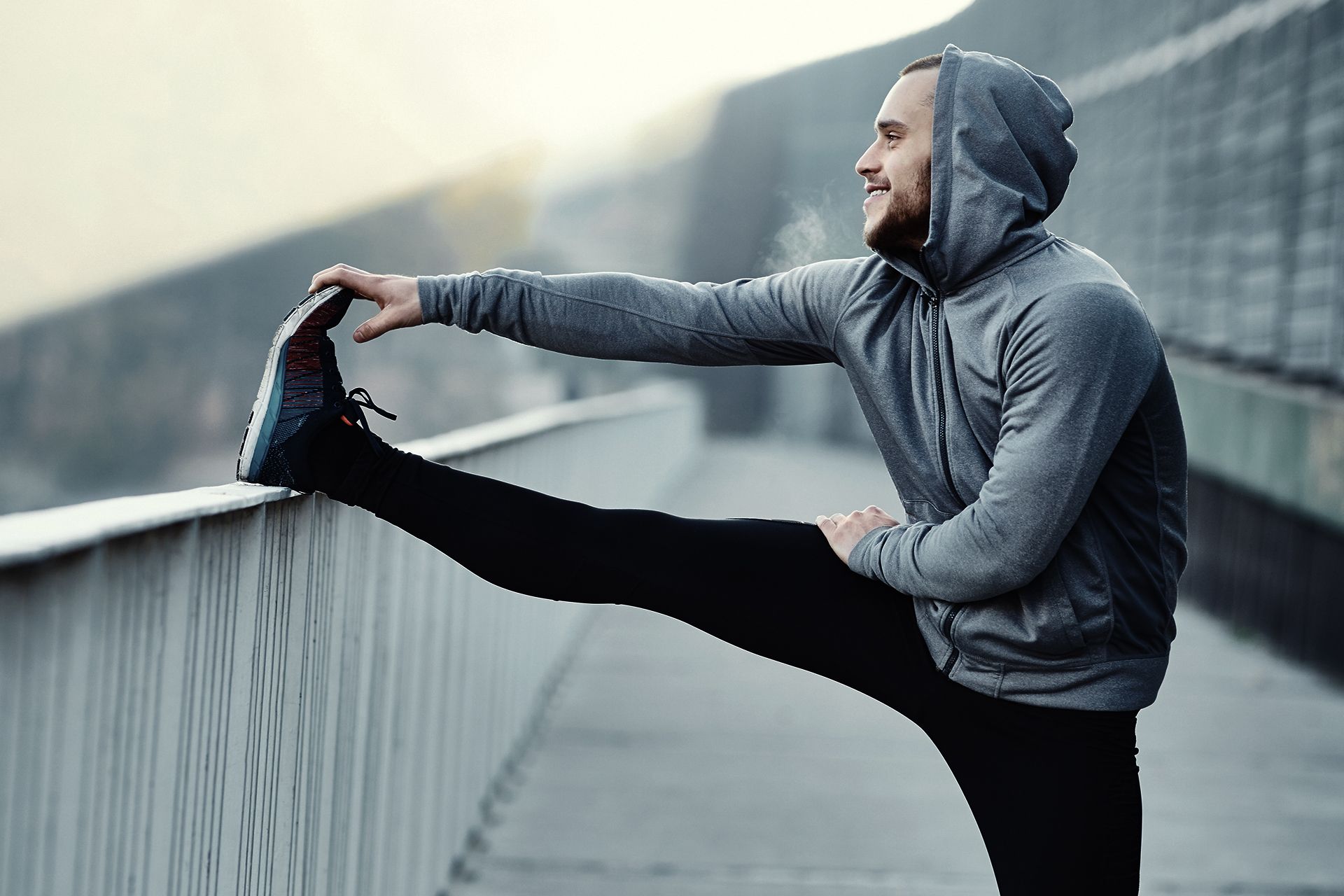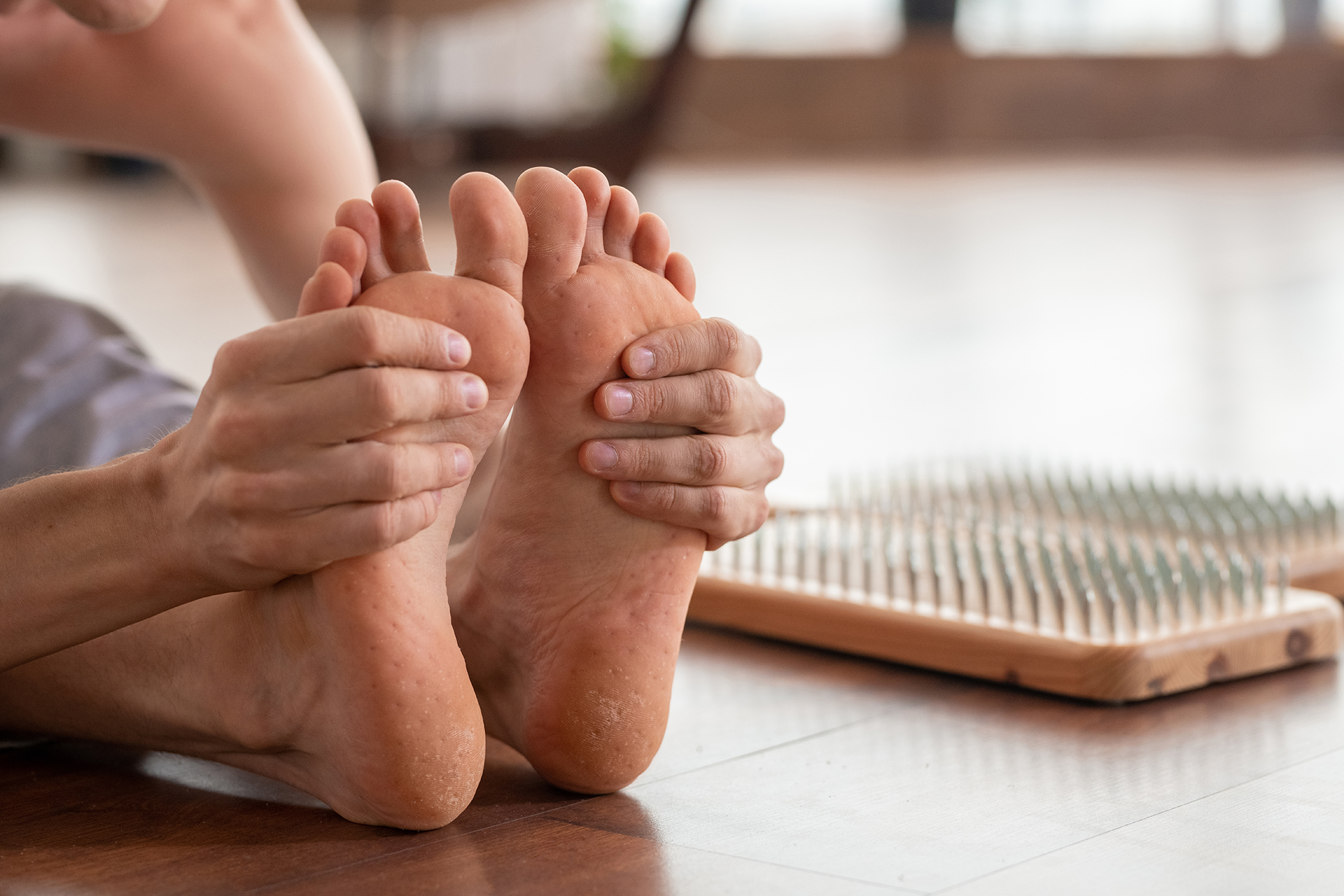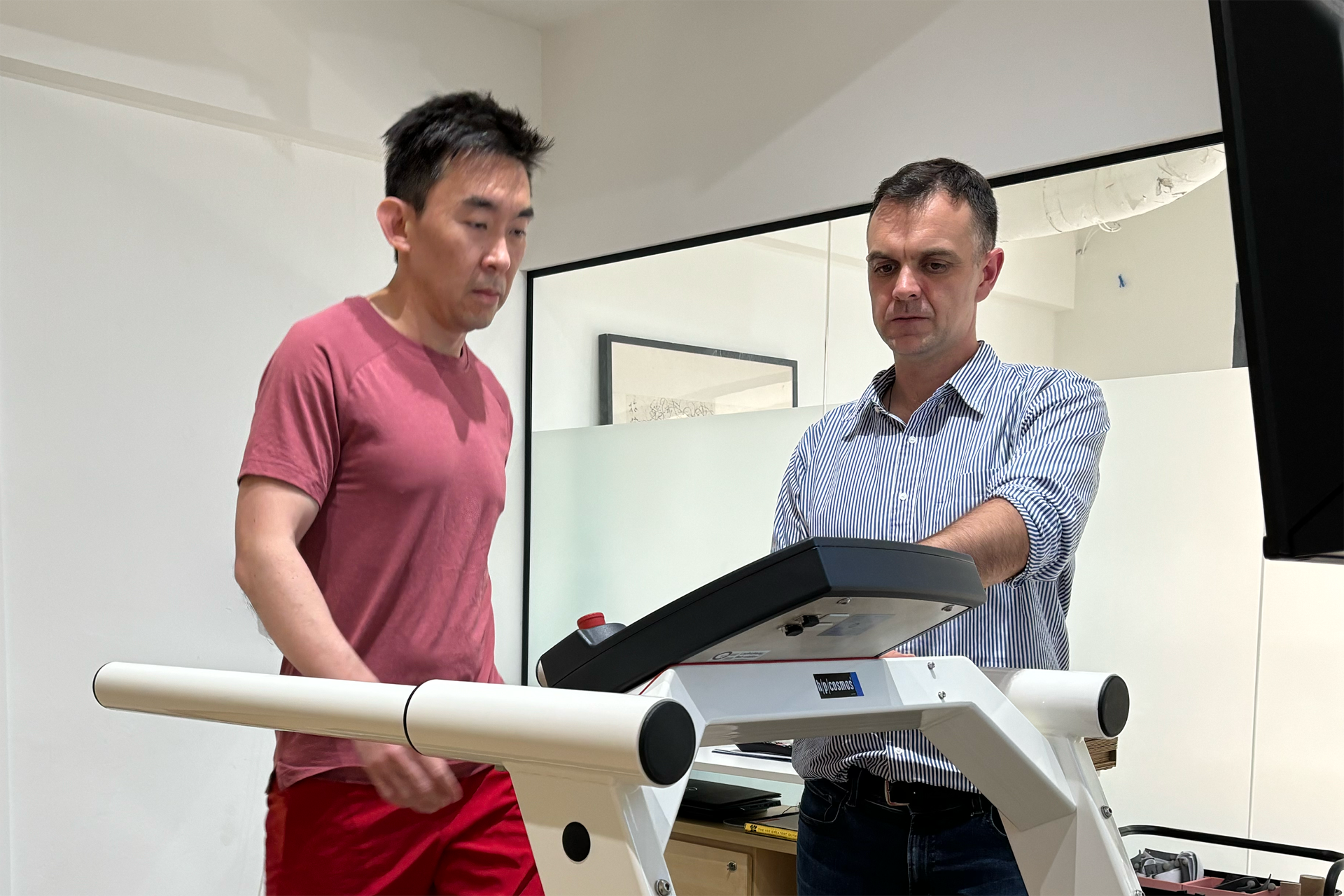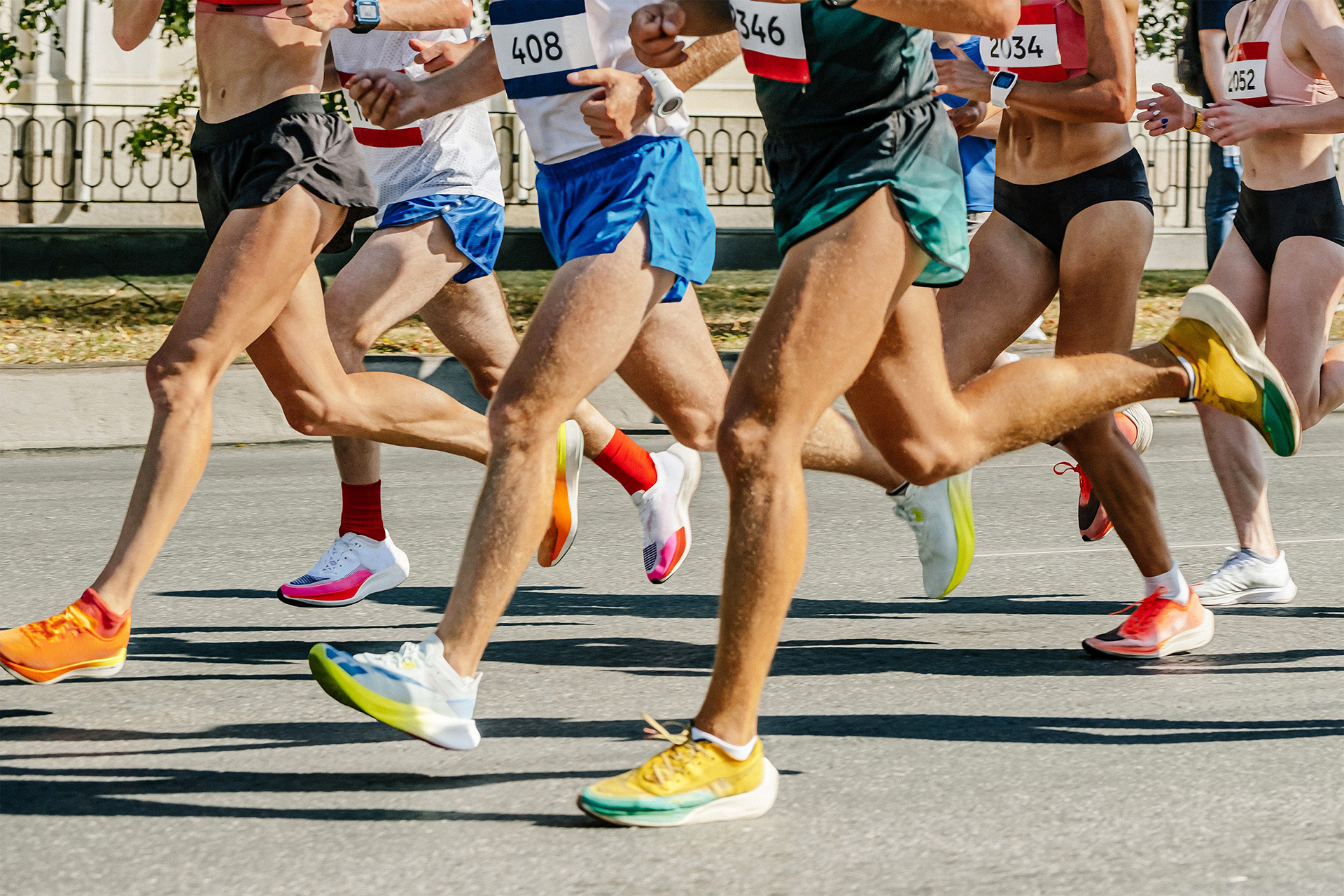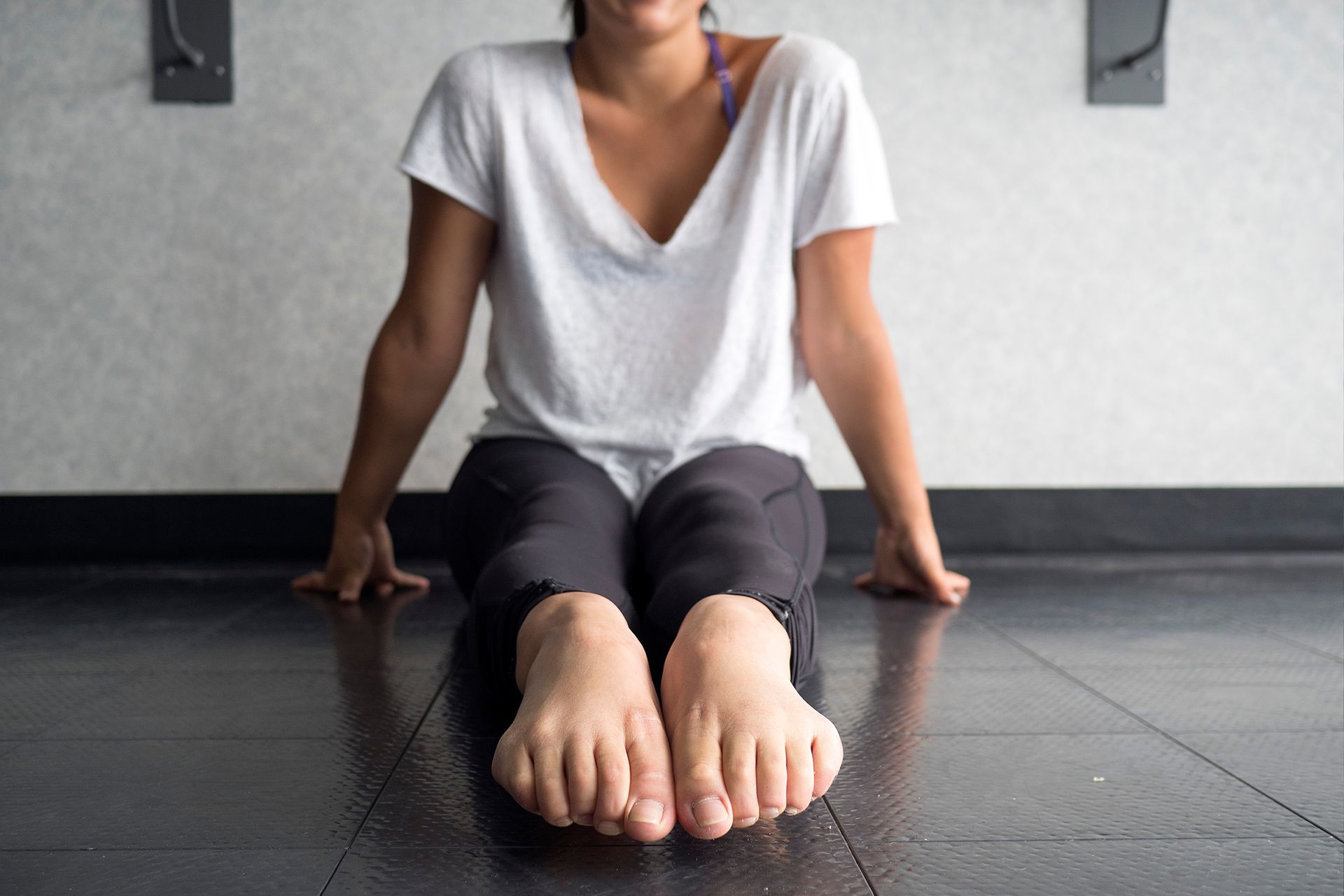
Hammertoes cause discomfort, pain, swelling, and stiffness in the toe’s middle joint, resulting from a muscle/tendon imbalance in the foot. This causes the joint to stick up, making it look like a hammer. Once afflicted with hammertoes, the body compensates for its weight through redistribution onto different areas of the foot, leading to further complications and discomfort. A consultation with one of our podiatrists can quickly diagnose if your symptoms are from hammertoes.
What Causes Hammertoe?
Hammertoe is when a toe, rather than following its natural arch, has an irregular bend at rest, leading to the toe appearing angular. It often affects the second, third, or fourth toe as the bend occurs at the joint, with the first toe being too large and the fifth toe too small to bend similarly.
Hammertoe affects the feet in many ways, increasing the chances for calluses and potentially altering your gait to compensate for the abnormality in the toe. Afflicting slightly more than 3% of adults. Among foot conditions, it is less common than either hallux valgus, also known as the bunion, or the bunionette, which is a bunion on the external side of the foot rather than the internal side.

One cause of hammertoe is genetic predispositions towards flat or high-arched feet. The toes may bend in both cases to compensate for an unnatural arch. With flat feet, the toes may consistently bend to add some flexibility to the foot; with a high arch, the flexor may be overpowered by the tensors.
The most common cause of hammertoe is an ill-fitting shoe. The foot becomes compressed by the shoe, forcing the toe into an unnatural position, forcing the toe to conform to a bend to compensate for the shoe’s shape. When the foot is out of the shoe, the toe may be able to flatten at the start. Over time, the bend may become permanent and rigid. In cases like this, managing the condition with conservative podiatric therapies becomes necessary.
What Are The Symptoms of Hammertoe?
The stages of hammertoe are defined by their severity. Flexible hammertoes may appear the least worrisome as the toe can still default to its normal position with some pressure. However, if the warning signs are not read, this can develop into a semi-rigid hammertoe, where the toe bend begins to stiffen. The final stage is a rigid hammertoe, where the toe can no longer move because the tendons and soft tissues have become too accustomed to their position and are fully tightened.
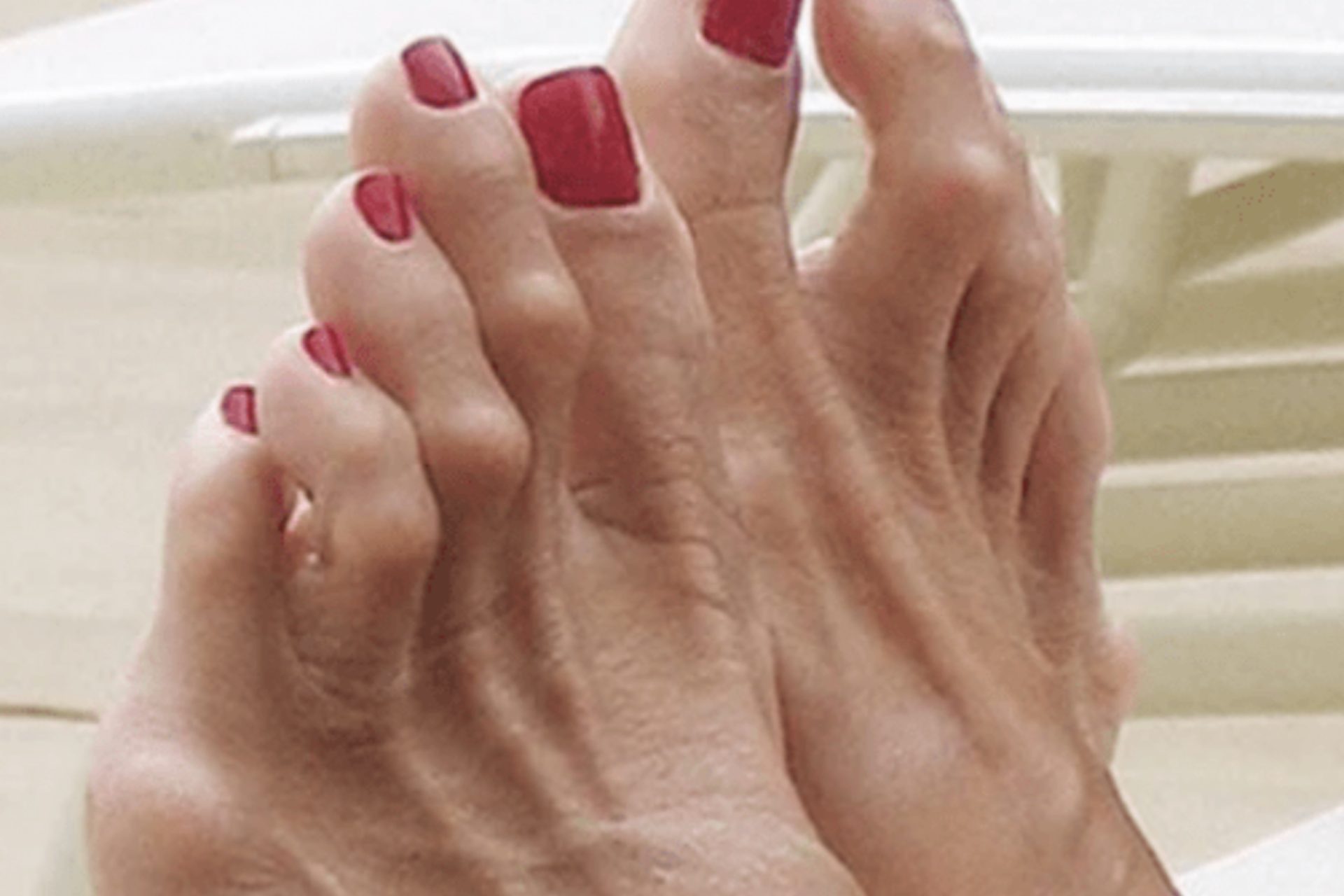
Hammertoes are more than just an aesthetic condition. It can affect the foot by forcing the patient to alter their gait to accommodate the stiffness in their toes. This can have long-term effects, harming other body parts as the lower limbs compensate for this lack of flexibility. It frequently leads to calluses developing on the toe as there is undue friction when walking while wearing shoes. These calluses can develop into more severe disfigurements, resulting in infections if the skin gets broken.
Difference between Hammer Toes, Mallet Toes, and Clawed Toes
Hammertoes are often confused with two other conditions: mallet or clawed toes. The primary difference between these three conditions is which joint is affected within the toe and how many toes are afflicted.
The big and little toes have two joints, while the other toes have three. The part nearest the foot is called the metatarsophalangeal joint, at the toe’s base. The second joint, the interphalangeal joint, is the primary joint involved in hammertoes. The last joint is the distal phalangeal joint and is the joint nearest the toenail.

- Patients with mallet toes have issues with the distal phalangeal joint, where only the toe at the middle joint bends downwards.
- Patients with claw toes face problems in the base of their toe, or the metatarsophalangeal joint, with the toe sticking up from the base and causing the rest to arch downwards. Unlike hammertoes, the final joint of the toe for claw toes is almost perpendicular to the ground, while the final joint in a toe afflicted with hammertoe is parallel to the ground.
Each of these ailments are quite different, though they may appear similar to the layman. They each require different treatment plans, so consult a podiatrist for a proper diagnosis to restore the full function of your feet.
Can Hammertoe Cause Plantar Fasciitis
Hammertoes can result in abnormal pressure distribution on the foot, particularly in areas like the ball of the foot or the metatarsal heads. This altered pressure distribution affects the foot’s load-bearing capacity, can strain the plantar fascia, and lead to foot injuries.
Moreover, hammertoes can also disrupt the natural walking and running biomechanics, leading to an abnormal gait pattern. This alteration in gait mechanics increases the stress on the plantar fascia, potentially contributing to the development or worsening of plantar fasciopathy.
Incidence of Bunions, Calluses and Corns
Physiological and biomechanical factors influence the development of bunions and calluses in individuals with hammertoes.
Bunions, also known as hallux valgus, can arise due to structural foot abnormalities like flat feet or excessive pronation. Imbalances in the foot muscles and ligaments can also contribute to the inward deviation of the big toe, resulting in a bunion.

In the case of corns and calluses, hammertoes can alter pressure distribution across the foot. The curled or bent position of the toes creates areas of increased pressure, leading to the development of corns and calluses. Additionally, the rubbing and friction caused by hammertoes against footwear or adjacent toes can further contribute to the formation of calluses as the skin thickens to protect against the friction.
Wearing ill-fitting shoes, particularly those with narrow-toe-boxed shoes or high heels, can exacerbate the condition by exerting pressure on the big toe joint. These factors significantly affect the development and progression of bunions and calluses associated with hammertoes.
Link between Diabetes and Hammertoes
Diabetic foot care is integral to overall health. People with diabetes are at a higher risk of developing hammertoes due to their reduced ability to perceive when their feet are not properly positioned within shoes. Diabetes, a metabolic condition, results in elevated blood sugar levels that can damage blood vessels and nerves over time. This condition is known as diabetic neuropathy.
It is common for people with diabetes to experience diminished sensory function in their feet due to the detrimental effects of high glucose levels on the nerves in the extremities.

Approximately 50% of people with diabetes develop neuropathy, which can manifest throughout the body, but is most frequently observed in the feet. Symptoms may include tingling sensations that can progress to numbness and loss of sensation.
Unfortunately, neuropathy not only affects sensation, but also disrupts the communication between nerves, muscles, and tendons in the feet. This can cause the soft tissues to contract and shrink. Consequently, diabetic hammertoes can develop as the toe muscles contract, creating an imbalance with other muscles in the feet and legs. As a result, people with diabetes may find it difficult to straighten the affected toe, leading to a protrusion that can rub against shoes and socks, causing discomfort.
Due to the reduced sensation, people with diabetes may be unaware that their shoes contribute to hammertoes’ development. This lack of awareness can be dangerous, as they may also fail to notice friction or the development of calluses on their feet. This can lead to further complications, such as infections, and in severe cases, even the need for amputations.
How to Correct Hammertoes without Surgery?
Treatment options vary depending on the severity of the condition. In cases where the toe is extremely rigid and causes daily pain, hammertoe surgery may be necessary to restore normal function and relieve pain. However, nonsurgical treatments are typically considered as the initial approach.

How can a podiatrist correct hammertoes? Treatment approaches and a podiatrist’s management of the condition will vary but may include footwear recommendations, insoles, physical therapy, and other therapies. More specifically:
- Footwear assessments and modifications: The first step is to modify footwear that may have contributed to the problem. This involves selecting shoes with wide toe space and avoiding high-heeled shoes that can exert excessive pressure on the toes. Wearing shoes with a wider toe box, low heels, and adequate arch support can relieve pressure on the toes and promote proper alignment.
- Orthoses: Some patients may benefit from custom-made orthoses, specially designed to support and properly align the foot within the shoe. Orthotics for bunions and hammertoes can provide support and cushioning, reducing pain and helping to align the toes properly. This helps ensure correct foot placement and improves comfort and flexibility.
- Toe exercises and stretches: Besides footwear modifications, incorporating foot stretches can be beneficial as some individuals develop hammertoes due to foot inflexibility. Engaging in specific exercises and stretches can help strengthen the muscles and enhance flexibility in the toes. This can aid in straightening the toes and reducing discomfort. However, it’s important to note that while stretching can help alleviate pain, it may not necessarily cure or correct hammertoes.
- Padding and taping: Padding or taping the affected toes can alleviate pain, prevent friction, and encourage better alignment.
- Medications and injections: Nonsteroidal anti-inflammatory drugs (NSAIDs) or corticosteroid injections may be prescribed by healthcare professionals to help alleviate pain and reduce inflammation associated with this condition.
It’s crucial to understand that non-surgical treatments may not fully reverse the toe deformity, particularly in advanced cases. When the condition is diagnosed early, prompt treatment can help correct the foot before any lasting damage occurs. If the hammertoe causes substantial pain, restricts mobility, or if conservative treatment do not offer adequate relief, surgical intervention may be required.
If you’re looking to find out more about how to fix hammertoe, consulting with a qualified podiatrist or foot specialist is the first step to determining the most suitable management approach based on the severity of your condition.
See a Podiatrist Today for Hammertoe Correction
There are a range of causes for hammertoes, such as genetics, footwear, and foot shape. Ensure you are treating your feet right to maintain good overall health and prevent unnecessary injuries from occurring. Hammertoes can be painful and be an impediment to your daily routine if not adequately dealt with.
If you’re concerned about hammertoes, suspect you have the condition, or simply experience foot pain, our expert podiatrist can properly diagnose your condition to manage hammertoe correction or foot dysfunction with proper conservative podiatric therapies to avoid more lasting damage to your feet.


